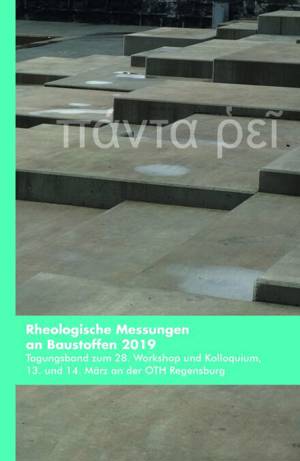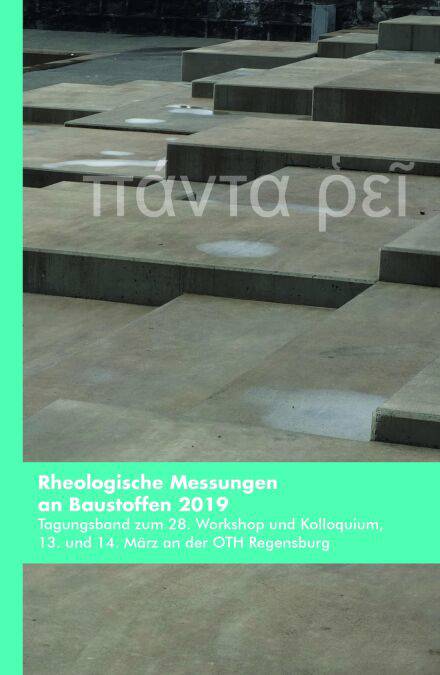
Vous voulez être sûr que vos cadeaux seront sous le sapin de Noël à temps? Nos magasins vous accueillent à bras ouverts. La plupart de nos magasins sont ouverts également les dimanches, vous pouvez vérifier les heures d'ouvertures sur notre site.
- Retrait gratuit dans votre magasin Club
- 7.000.000 titres dans notre catalogue
- Payer en toute sécurité
- Toujours un magasin près de chez vous
Vous voulez être sûr que vos cadeaux seront sous le sapin de Noël à temps? Nos magasins vous accueillent à bras ouverts. La plupart de nos magasins sont ouverts également les dimanches, vous pouvez vérifier les heures d'ouvertures sur notre site.
- Retrait gratuit dans votre magasin Club
- 7.000.0000 titres dans notre catalogue
- Payer en toute sécurité
- Toujours un magasin près de chez vous
Rheologische Messungen an Baustoffen 2019 EBOOK
Tagungsband zum 28. Workshop und Kolloquium, 13. und 14. März an der OTH Regensburg
Markus Greim
Ebook | Allemand
2,99 €
+ 2 points
Description
Rheological measurements help to optimize the robust application of building materials. For the past few years applied rheology has been moving increasingly into the center of attention of the civil engineering society. Advanced testing equipment, intensive research and development work have all helped to deepen the understanding of this field. Last but not least, different conferences, such as the 28th Conference on the Rheology of Building Materials at the OTH, have helped to exchange the findings and establish valuable new contacts. Finding a compromise between rheological theory and its practical application has been the main topic of these 28 conferences.
In these proceedings important rheological topics are addressed: specific applications of concrete such as self-compacting concrete, tremie concrete and sprayed concrete and mortar mixes for 3D printing, which all may be classified as self-compacting concretes. The consideration of time- and temperature-dependent changes in workability are essential for a successful application of these materials. Furthermore, the influence of the mixing energy used and the way of casting/spraying is of high importance for the rheological properties. The rheology of other concrete types is drastically changed due to the compaction by vibrators.
Concrete rheology is controlled by its paste content and the rheology of the paste. Tests on pastes are easier to perform, as particle migration of aggregates is not present. However, one has to ask whether it is sufficient to use the results from the paste-measurements for the assessment of concrete and how the optimized paste content will be predetermined. The other question is which admixtures or additives may help to improve the very different application processes. Apart from using superplasticizer and stabilizers, entrained air is a powerful tool to influence rheology.
In these proceedings important rheological topics are addressed: specific applications of concrete such as self-compacting concrete, tremie concrete and sprayed concrete and mortar mixes for 3D printing, which all may be classified as self-compacting concretes. The consideration of time- and temperature-dependent changes in workability are essential for a successful application of these materials. Furthermore, the influence of the mixing energy used and the way of casting/spraying is of high importance for the rheological properties. The rheology of other concrete types is drastically changed due to the compaction by vibrators.
Concrete rheology is controlled by its paste content and the rheology of the paste. Tests on pastes are easier to perform, as particle migration of aggregates is not present. However, one has to ask whether it is sufficient to use the results from the paste-measurements for the assessment of concrete and how the optimized paste content will be predetermined. The other question is which admixtures or additives may help to improve the very different application processes. Apart from using superplasticizer and stabilizers, entrained air is a powerful tool to influence rheology.
Spécifications
Parties prenantes
- Auteur(s) :
- Editeur:
Contenu
- Nombre de pages :
- 116
- Langue:
- Allemand
Caractéristiques
- EAN:
- 9783748246534
- Date de parution :
- 03-04-19
- Format:
- Ebook
- Protection digitale:
- Adobe DRM
- Format numérique:
- ePub







